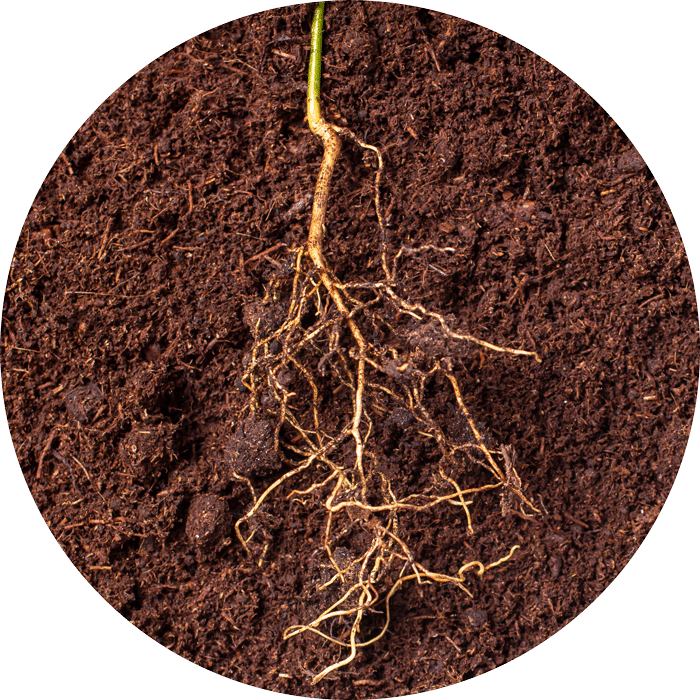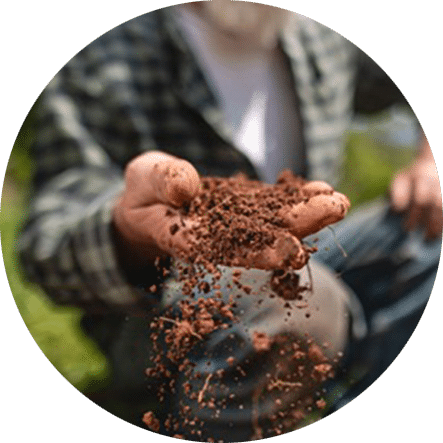Regenerative Agriculture: Restoring Balance to Cotton Farming
Did you know that cotton production has the power to nurture the environment while ensuring the resilience of the apparel industry? Regenerative agriculture, with its transformative practices like no-till farming and cover cropping, is leading the charge toward a more sustainable future. This is particularly important when considering that cotton is a critical global crop that supports over 250 million people’s livelihoods and provides 25% of the world’s textiles [1] [2].
This section explores the ways in which regenerative agriculture promotes soil health, reduces chemical inputs and propels sustainability in the apparel industry.
Embracing Regenerative Farming for a Flourishing Ecosystem

Regenerative agriculture sequesters carbon in the soil and intentionally improves soil health, biodiversity, water quality, and air quality while ensuring the viability of farm production.” Field to Market: the Alliance for Sustainable Agriculture [3]
Regenerative agriculture describes farming practices that can create a positive impact on the environment and oftentimes productivity. By adopting practices like crop rotation and conservation tillage, cotton growers can enhance the resilience of ecosystems and foster long-term agricultural productivity. Not only can these regenerative practices lower costs, but they also can increase net income, offering a win-win solution for both farmers and the environment in various locations.
There are numerous benefits to adopting regenerative agriculture practices, including social and environmental advantages. Strong incentives for farmers to embrace these practices and the commitment of multi-generational cotton farms in the U.S. to preserve the soil for future generations make regenerative agriculture a smart choice for many growers.
At the Heart of Regenerative Agriculture: A Systems-Based Perspective
Field to Market: the Alliance for Sustainable Agriculture provides a succinct definition of regenerative agriculture:
“Regenerative agriculture sequesters carbon in the soil and intentionally improves soil health, biodiversity, water quality, and air quality while ensuring the viability of farm production”[3].
The principles of regenerative agriculture are adaptable to local conditions. Field to Market summarizes these principles as follows[3]:
1. Minimizing soil disturbance
2. Maintaining living roots in soil
3. Continuously covering bare soil
4. Maximizing diversity, with emphasis on crops, soil microbes, and pollinators
5. Integrating livestock where feasible
Practices such as no-till or reduced tillage, crop rotation, cover crops, integrated pest management and composting play pivotal roles in achieving regenerative agriculture’s goals. They improve soil quality, enable water retention, reduce erosion and foster a biodiverse ecosystem.
The Vitality of Soil Health: Nurturing Sustainable Agricultural Systems

Soil health serves as the bedrock of regenerative agriculture, enabling sustainable and productive farming systems. It encompasses the soil’s physical, chemical and biological properties, which are interconnected and crucial for agricultural productivity and environmental quality. Healthy soil provides numerous benefits:
1. Enhanced nutrient cycling and availability: Healthy soil naturally provides essential nutrients, reducing the need for synthetic fertilizers to optimize yields.
2. Improved water retention and infiltration: Healthy soil efficiently stores and transports water, mitigating erosion, runoff and drought-related challenges.
3. Increased organic matter – such as living plant roots and microorganisms – and carbon sequestration: Soil organic matter (SOM) enriches soil structure, nutrient provision and water-holding capacity. It also plays a vital role in capturing atmospheric carbon dioxide, helping combat climate change.
4. Enhanced biodiversity and ecosystem services: Healthy soils foster diverse organisms, including beneficial bacteria, fungi, insects and earthworms. These organisms contribute to essential ecosystem services such as nutrient cycling, pest control and decomposition or organic matter.
In recent decades, global soil quality has experienced degradation due to factors such as soil erosion, organic carbon loss and nutrient depletion— often resulting from conventional tillage practices. The annual cost of soil erosion alone is estimated at $30-40 billion in the US and $400 billion globally [4]. Figures reveal that around 75 billion tons of fertile soil are lost from agricultural systems worldwide each year due to erosion and other factors [5]. It takes approximately 1000 years to form a mere 1 cm layer of soil [6].
In the U.S., soil depletion occurs 10 times faster than natural replenishment, while China and India experience an even more alarming rate of 30-40 times faster [4]. The United Nations warns that without intervention, all remaining fertile soil will be depleted within a mere 60 years [7]. Given the profound significance of soil health, farmers—cotton growers included—increasingly recognize the urgency of addressing this issue.
Driving Change Through Consumer Choices and Industry Initiatives

Industry and consumers can encourage regenerative farming practices by adopting supporting industry programs that drive sustainable cotton production through regenerative farming. These science-based programs support cotton growers through enabling practices that will lead to storing more carbon, building drought resilience and helping to mitigate the effects of climate change.
To learn more about regenerative agriculture practices, click here.
Benefits
Incorporated believes in the power of regenerative agriculture practices to promote sustainability. By adopting regenerative techniques, cotton growers can enhance their environmental stewardship, improve soil health, mitigate climate change and foster a more resilient agricultural system.
Challenges and Differences
Shifting to regenerative agriculture practices can help growers improve their environmental footprint, but it’s not without its challenges. Successfully adopting these practices requires a transformation in farming systems and mindsets. To overcome these obstacles, it is necessary to combine education, resources and market incentives to support our farmers.
Practices
Healthy soil forms the foundation for sustainable and productive agriculture, and its vitality is of utmost importance. In the face of soil degradation, cotton growers have embraced regenerative farming practices to combat this challenge and foster long-term environmental sustainability.
THE LATEST

Water & Cotton
Discover the truth about cotton’s water usage. Is it really a water-thirsty crop? Learn about drought tolerance, water-saving practices, and how much water is needed to make a cotton t-shirt.
Cotton’s Natural Biodegradability: Water
Discover why cotton is a sustainable choice. Cotton is a biodegradable, drought-tolerant crop and helps reduce plastic waste in our oceans. Check the label for cotton and help save our water.
Amid Increasing Climate Change Challenges, Cotton Continues to Make Water...
Water remains one of the most important resources due it its impact on our everyday lives, especially as we work with our changing environment. The impact of climate change, however, has made it challenging for growers to manage this resource. Currently, nearly half...


